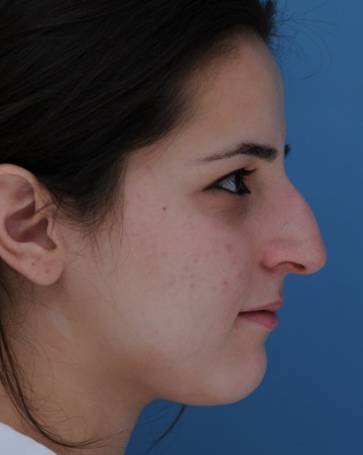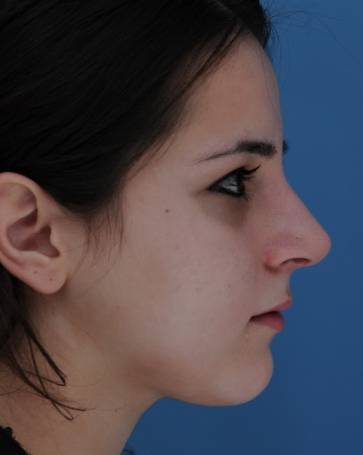Nostril Asymmetry And Alar Retraction After Rhinoplasty

This article is based upon the scientific study published by Dr. Constantinides in 2013. For the original study see: “Alar retraction: etiology, treatment, and prevention”.
Rhinoplasty procedures can improve how the nose looks and works. However, certain things on the nose are easier to improve than others. One of the hardest things for even the expert rhinoplasty surgeon to do is to create and maintain nostril symmetry.
In revision rhinoplasty, nostril symmetry is even harder to achieve. This may be because of scar tissue, loss of supporting cartilage during primary rhinoplasty, and failed attempts to narrow the nostrils.
Nostril shape is defined by the tip cartilages, the skin wrapped over them, the position of the nasal septum, the height of the underlying bones of the maxilla (upper jaw), and the surrounding cheek muscles and fat. Although the nostrils do contain muscles that can flare them (anterior dilator naris, alar nasalis), these are very thin and typically do not affect shape very much. When rhinoplasty removes, re-positions and adds cartilage to the tip area, nostril shape can change immediately or gradually during the healing process. Swelling during surgery can make the changes difficult to see during rhinoplasty and difficult to predict afterwards.
Before and After Nasal Asymmetry Correction
Nostrils can appear uneven or malpositioned due to alar flare, asymmetric alar width, nostril retraction, excess columellar show and columellar deviation. Alar flare and width can be controlled with alar base modification surgery, but if over-reduced alar width cannot be easily restored. To see how I perform alar base modification, please see my video “Alar Base Reductions: Avoiding Pitfalls of Planning and Execution”. (Please note, the instructional video is directed towards surgeons with intraoperative photographs.)
Excessive show of the nostrils can be either from nostril retraction or columellar droopiness. When it comes from mild to moderate nostril retraction, it is treated with cartilage grafts than can push the nostril edge down. This can be combined with repositioning of the alar cartilage above the nostril when needed. When the retraction is severe, then the inside lining of the nostril edge also has to be extended. In these cases, composite grafts using skin and cartilage together from the ear are used. The skin is placed inside the nostril edge to extend how far the nostril edge can be pulled down and the cartilage adds structural support.
When the columella is excessively droopy or deviated, then the bottom edge of the septum must be straightened and shortened. Then, once straight, the portions of the tip cartilages (called the medial crura) in the columella are raised to meet the now shorter septum and sewn there. Often some inner skin must also be removed to insure the repair is permanent. This is a variation of the “tongue-in-groove” technique.
Nostril symmetry is a particularly challenging part of every rhinoplasty and revision rhinoplasty. The experienced rhinoplasty surgeon can make improvements so that better symmetry is achieved in challenging cases by utilizing advanced rhinoplasty techniques such as those described above. Preoperative photo imaging can help to decide what can and cannot be achieved through surgery.
For examples of before and after photos correcting nostril shape, please see our Photo Gallery.
For more information about Dr. Constantinides, please see his Bio Page.
 Before
Before  After
After 
Hello
Do you reconstruct large septal perforation?
Do you have a solution to replace septum with synthetic plate Or full thickness costal graft
Regards
Hi Edi,
Thanks for your great question! We can reconstruct perforations 2.5 cm or smaller with good success. Unfortunately, larger perforations have a very poor success rate. Dr. Constantindes indicated that he would be happy to provide an evaluation to determine the best course of treatment. Please give us a call at (512) 617-9200 to schedule an appointment.
Thanks,
WD Staff
I am led to believe it is possible to correct a small alar base asymmetry by slightly twisting the septum. I had rhinoplasty and the surgeon managed to achieve a virtually perfect alar symmetry by using the above method.